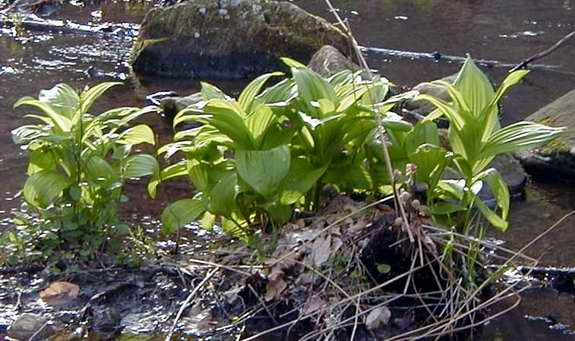|
Common
Name: False Hellebore, Indian
Poke, Bugbane Scientific Name: Veratrum viride (Latin for green [viridis] hellebore [Veratrum]) False Hellebore is a perennial that emerges early in the spring as small, bright green spears that open up into striking foliage in wet woodlands and swampy areas. Potpourri: False Hellebore is named for Black Hellebore (Helleborus niger), that is native to the mountainous regions of Central and Southern Europe. However, unlike other false variants, it is not so named due to a similar appearance, but rather due to being similarly poisonous. The name hellebore is derived from the Greek elein, to injure, and bora, food. In France, it is known as "tabac du diable," devil's tobacco. False Hellebore contains the alkaloids jervine and cyclopamine that cause depressed cardiac activity, a burning sensation in the mouth, and headaches in humans. Although it seldom kills humans as ingestion induces vomiting, it is a big problem for grazing animals, particularly sheep. Pregnant ewes who eat the plant have a statistically higher incidence of having lambs that are either stillborn or that have severe birth defects. Native Americans used the poison of the "Indian Poke" as a means of selecting tribe members who were the strongest. The one who could tolerate the most poison before become sick was thereby identified as the chief. Due to its toxic effects on animals, False Hellebore has long been used as an insecticide. "Bugbane" was made from boiling the root of the plant and applying the resultant decoction to the scalp to kill head lice. |
